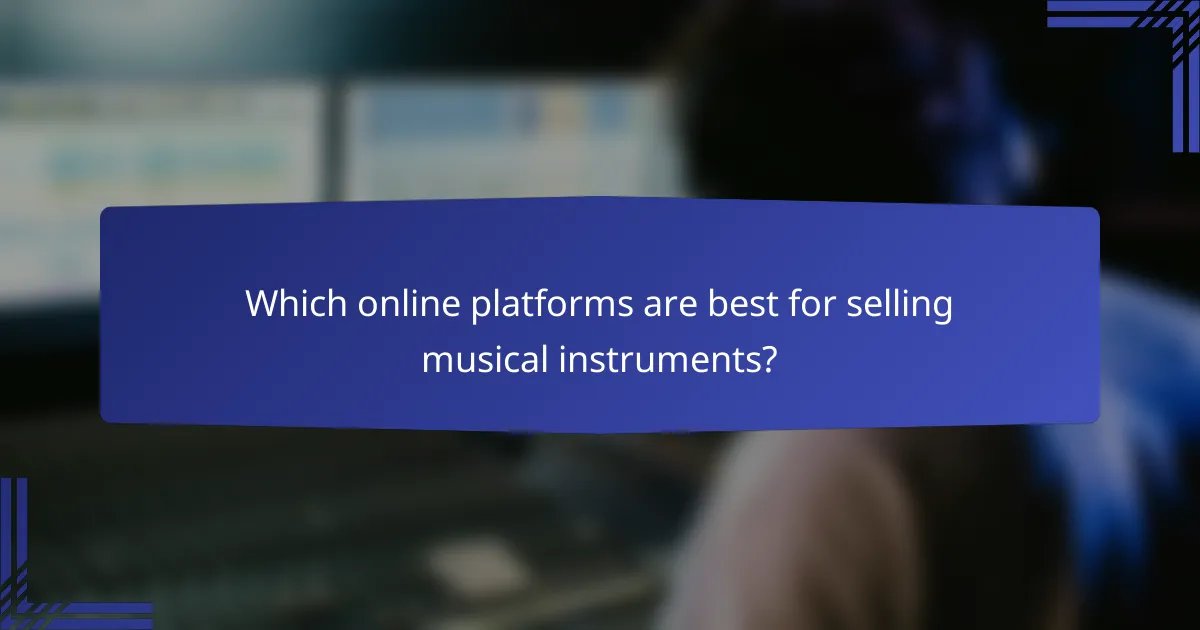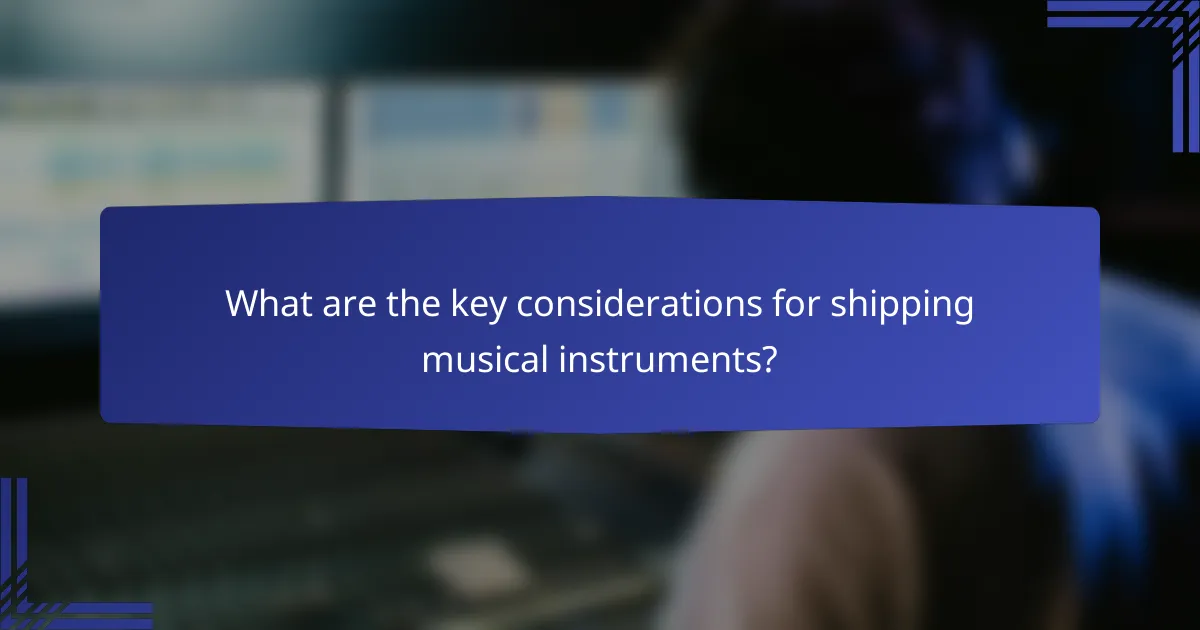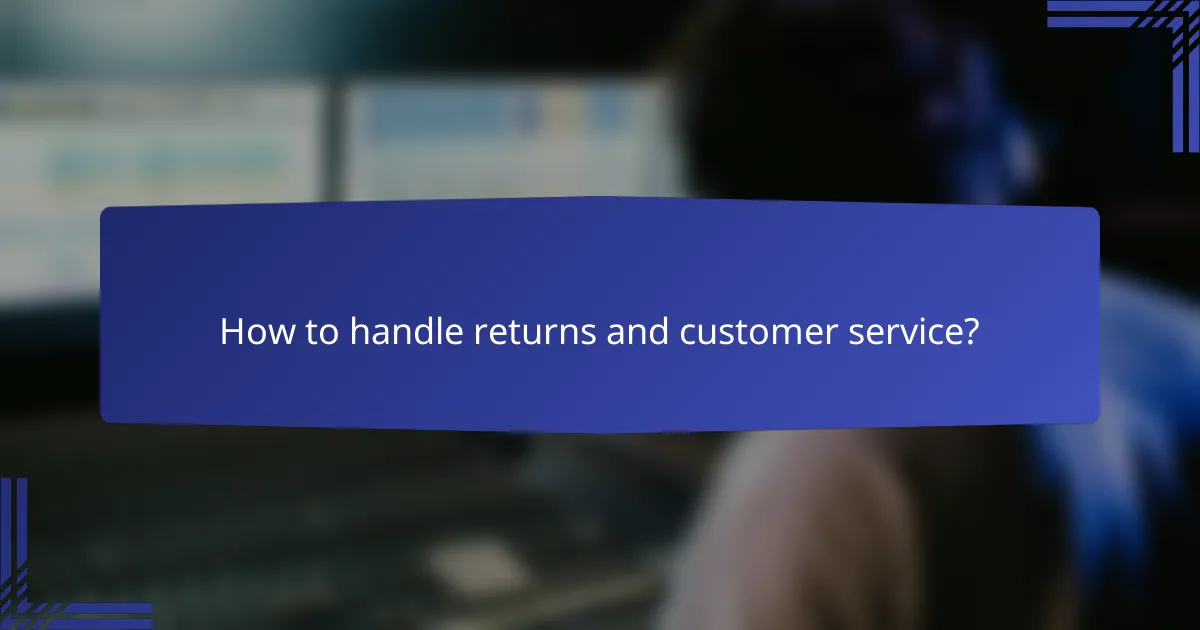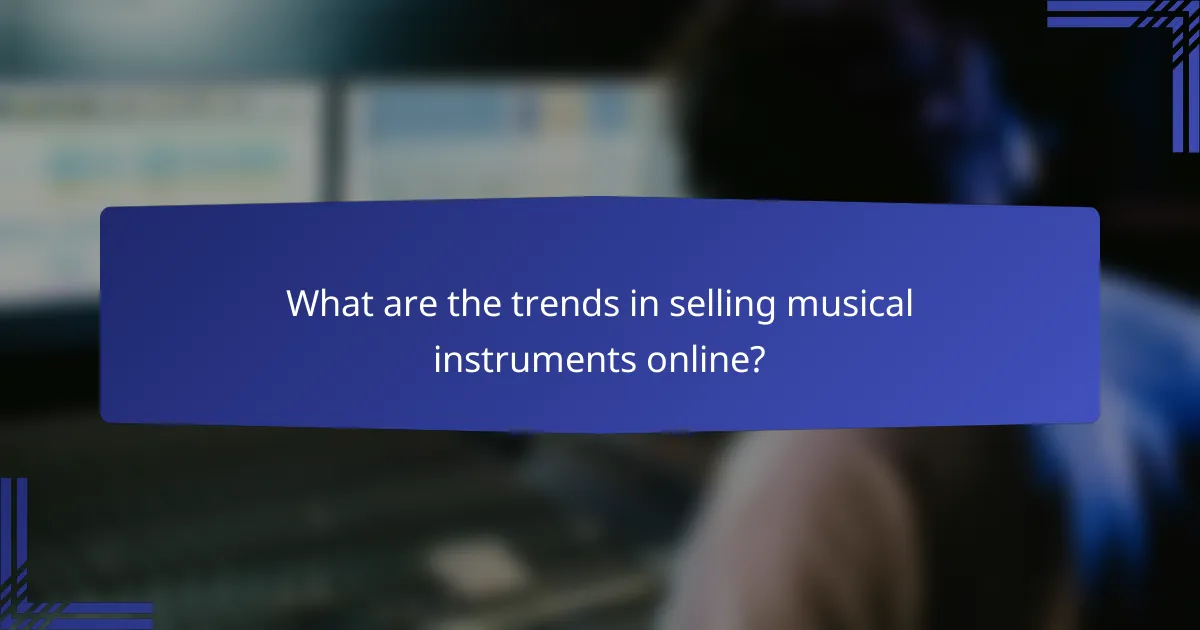Selling musical instruments online requires a strategic approach that encompasses selecting the right platform, implementing effective pricing strategies, and engaging in targeted marketing. Each online marketplace offers distinct advantages, making it essential to align your choice with your audience and sales goals. By understanding market dynamics and leveraging various marketing channels, sellers can optimize their reach and profitability.

Which online platforms are best for selling musical instruments?
Several online platforms cater specifically to selling musical instruments, each with unique advantages. Choosing the right one depends on your target audience, the type of instrument, and your sales strategy.
Reverb for niche instruments
Reverb is an excellent platform for selling niche musical instruments, particularly vintage or unique items. It attracts dedicated musicians and collectors who are often willing to pay a premium for rare finds.
When listing on Reverb, ensure your descriptions are detailed and include high-quality images. Consider setting competitive prices based on similar listings to attract buyers.
eBay for broad reach
eBay offers a vast audience, making it ideal for sellers looking to reach a wide range of potential buyers. You can auction items or set fixed prices, allowing flexibility in your selling strategy.
Keep in mind eBay’s fees, which can vary based on the final sale price. Research similar items to determine a competitive price point and utilize eBay’s promotional tools to enhance visibility.
Amazon for high visibility
Amazon provides high visibility for musical instruments, benefiting from its massive customer base. Listing your instruments here can lead to quick sales, especially for popular brands and models.
However, be aware of Amazon’s selling fees and the need for compliance with their policies. Ensure your product descriptions are clear and include keywords that potential buyers might search for.
Facebook Marketplace for local sales
Facebook Marketplace is a great option for local sales, allowing you to connect directly with buyers in your area. This platform is particularly useful for larger instruments that may be costly to ship.
When using Facebook Marketplace, be transparent about the condition of your instruments and set reasonable prices. Utilize local groups to expand your reach and engage with potential buyers directly.

What pricing strategies work for musical instruments?
Effective pricing strategies for musical instruments involve understanding market dynamics, customer perceptions, and the unique value of each item. By employing methods like competitive pricing, value-based pricing, and dynamic pricing, sellers can optimize their pricing to attract buyers while maximizing profits.
Competitive pricing analysis
Competitive pricing analysis involves researching similar musical instruments offered by competitors to set your prices appropriately. Begin by identifying key competitors and their pricing structures, then position your products slightly above, below, or at parity based on quality and features.
Consider using online tools or marketplaces to track competitor prices. Regularly updating your pricing strategy based on market changes can help maintain competitiveness. Avoid pricing too low, as it may devalue your instruments and harm brand perception.
Value-based pricing for unique items
Value-based pricing focuses on the perceived value of unique musical instruments rather than solely on costs. This strategy is particularly effective for handcrafted or vintage items, where buyers are willing to pay a premium for quality and rarity.
To implement this, assess the unique features and benefits of your instruments, and gather customer feedback to understand their willingness to pay. Highlight these unique aspects in your marketing to justify higher prices, ensuring that your pricing reflects the true value perceived by customers.
Dynamic pricing for seasonal trends
Dynamic pricing adjusts prices based on market demand, seasonality, and inventory levels. For musical instruments, this can mean increasing prices during peak buying seasons, such as back-to-school or holiday periods, and offering discounts during slower sales periods.
Utilize sales data and market trends to inform your pricing adjustments. Implementing automated pricing tools can help manage these changes efficiently. Be cautious not to alienate customers with frequent price fluctuations; maintain transparency about why prices change to foster trust.

How to effectively market musical instruments online?
To effectively market musical instruments online, focus on engaging potential customers through targeted advertising, personalized communication, and strategic partnerships. Utilizing platforms like social media, email, and influencer collaborations can significantly enhance visibility and sales.
Social media advertising on Instagram
Instagram is a powerful platform for marketing musical instruments due to its visual nature and large user base. Create eye-catching posts and stories showcasing your products, including high-quality images and videos that highlight features and sound quality.
Consider using Instagram Ads to target specific demographics, such as musicians or music enthusiasts. Set a budget that aligns with your goals, and monitor engagement metrics to optimize your campaigns for better performance.
Email marketing campaigns
Email marketing remains an effective way to reach customers directly. Build a subscriber list by offering incentives like discounts or exclusive content, and segment your audience based on their interests in different types of instruments.
Craft compelling emails that include product highlights, promotions, and informative content about music trends. Aim for a consistent schedule, but avoid overwhelming your audience with too many messages.
Influencer partnerships in music
Partnering with music influencers can amplify your reach and credibility. Identify influencers who align with your brand and have a genuine following in the music community. Collaborate on content that showcases your instruments in use, such as tutorials or reviews.
Negotiate terms that are mutually beneficial, whether through product exchanges, commissions, or flat fees. Monitor the impact of these partnerships by tracking engagement and sales generated from influencer promotions.

What are the key considerations for shipping musical instruments?
When shipping musical instruments, key considerations include proper packaging, insurance for valuable items, and selecting cost-effective shipping methods. Each of these factors plays a crucial role in ensuring the instrument arrives safely and within budget.
Packaging requirements for protection
Proper packaging is essential to protect musical instruments during transit. Use sturdy boxes that are slightly larger than the instrument, allowing for cushioning materials like bubble wrap or foam. For delicate items, consider double-boxing for added protection.
Ensure that all parts of the instrument are secure and cannot move during shipping. For example, remove detachable parts and wrap them separately to prevent damage. Label the package as “Fragile” to alert handlers to take extra care.
Shipping insurance for high-value items
Shipping insurance is crucial for high-value musical instruments to safeguard against loss or damage. Most carriers offer insurance options that can cover the full value of the instrument, typically ranging from a few dollars to a percentage of the item’s value.
Before shipping, assess the instrument’s value and choose an appropriate insurance coverage level. Keep all receipts and documentation to streamline any claims process if necessary. This step can provide peace of mind when sending valuable items.
Cost-effective shipping options
Choosing cost-effective shipping options can significantly reduce expenses when sending musical instruments. Compare rates from various carriers, including USPS, UPS, and FedEx, as prices can vary widely based on size, weight, and distance.
Consider using ground shipping for non-urgent deliveries, as it is often cheaper than air freight. Additionally, look for discounts or flat-rate shipping options that may apply to your shipment. Always factor in the balance between cost and delivery speed to meet your needs.

How to handle returns and customer service?
Handling returns and customer service effectively is crucial for maintaining customer satisfaction and loyalty in the musical instrument market. A clear return policy and responsive support channels can significantly enhance the buying experience.
Clear return policy guidelines
Establishing clear return policy guidelines helps set customer expectations and reduces confusion. Specify the time frame for returns, typically ranging from 14 to 30 days, and outline the condition in which items must be returned, such as being unused or in original packaging.
Consider including information on who bears the return shipping costs, as this can influence purchasing decisions. For instance, offering free returns can encourage customers to buy with confidence, while charging them may deter some buyers.
Responsive customer support channels
Responsive customer support channels are essential for addressing inquiries and resolving issues promptly. Offer multiple contact methods, such as email, phone, and live chat, to cater to different customer preferences.
Ensure that your support team is well-trained in product knowledge and customer service best practices. Aim for quick response times, ideally within a few hours, to enhance customer satisfaction and build trust in your brand.

What are the trends in selling musical instruments online?
Online sales of musical instruments are increasingly driven by technological advancements and changing consumer preferences. Key trends include the rise of virtual instrument sales and a growing demand for eco-friendly products.
Growth of virtual instrument sales
The popularity of virtual instruments has surged, particularly as musicians seek affordable and versatile options. Digital audio workstations (DAWs) and software synthesizers allow users to create music without the need for physical instruments, making them appealing to beginners and professionals alike.
Platforms like Splice and Native Instruments offer subscriptions for access to a vast library of sounds and samples, catering to diverse musical styles. This shift towards virtual instruments can reduce costs for musicians and expand their creative possibilities.
Increased demand for eco-friendly products
Consumers are becoming more environmentally conscious, leading to a heightened interest in eco-friendly musical instruments. Brands that utilize sustainable materials and ethical manufacturing processes are gaining traction in the market.
For example, instruments made from reclaimed wood or biodegradable materials are increasingly popular. Retailers can capitalize on this trend by highlighting the sustainability of their products in marketing efforts, appealing to eco-minded consumers.
